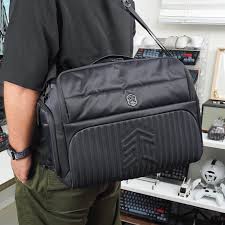
A few red spots around your mouth or chin may be the first indication of mild acne. Maybe work is difficult right now, or you have other obligations calling your name. It’s not acne, you reason. What teenagers get is acne.
There is a persistent misconception that acne only affects teenagers. Despite its severity, acne, which affects an estimated 40 to 50 million Americans, is the most prevalent skin problem in the nation and can be stressful.
You can face the issue head-on and discover a practical solution by comprehending acne and evaluating the available acne treatment choices. Acne, also known as acne vulgaris or acne rosacea, cannot be cured but can be managed. With the assistance of your dermatologist or physician, mild acne can be effectively controlled.
Many people are shocked to learn that they have adult acne.
The prevalent misconception is that acne only affects kids and teenagers. Literally from birth to death, acne can be observed.
Why do I have acne?
Although it can begin at any age, acne is most frequently associated with the changes in hormone levels throughout puberty.
The skin’s grease glands adjacent to hair follicles release more oil when certain hormones are present (abnormal sebum).
A normally benign skin bacterium called P. acnes changes its behavior in response to this aberrant sebum, becoming more aggressive and producing pus and inflammation.
Additionally, the hormones thicken the inner lining of the hair follicle, resulting in pore obstruction (opening of the hair follicles). The skin cannot be cleaned to remove this obstruction.
The Signs of Mild Acne
How does acne appear? The signs of adult acne can differ greatly from those of teenage acne. Take location as an example. Acne may be more prone to develop in the lower face, particularly in the areas around the mouth, jaw, and neck, as opposed to little pimples in the T-Zone.
Acne lesions frequently develop on the face, neck, upper back, and chest, which have the largest density of sebaceous glands. In essence, blocked pores result in papules and pustules, which are types of pimples. Both whiteheads and blackheads can trap a concoction of oil, germs, and dead skin cells in their totally and partially closed pores, respectively.
Adult acne may be accompanied by irritation, pigmentation, or dry skin. Acne is brought on by a variety of circumstances. Breakouts in women can result from hormonal changes like pregnancy and menopause. Acne can be caused by extrinsic causes like clothing or drugs, and stress may be a contributing factor.
Getting to the Root of the Problem
The first thing to do if you’ve observed any acne symptoms is to make an appointment with your doctor or dermatologist. Today, there are many treatments available, so you don’t need to buy pricey masks.
Usually, topical medicines like benzoyl peroxide, salicylic acid, or azelaic acid are used to treat moderate acne. To treat mild inflammatory acne, topical antibiotics such erythromycin, metronidazole, or clindamycin may be utilized. The vitamin A-derived retinoids Retin-A, Differin, or Tazorac, which aid in unplugging follicles and have anti-inflammatory qualities, may be prescribed by your dermatologist.
According to several studies, applying a topical retinoid along with an antimicrobial agent together is more beneficial than applying either agent alone to treat mild acne.
Gels, lotions, and creams are just a few of the numerous forms that topical drugs can take. To find out which one will suit your skin the best, consult your dermatologist. Creams and face cleanser may work better for people with dry or sensitive skin, while gels may work better for people with oily skin.
According to Farris, adult acne patients typically have dry skin as opposed to teens who have oily skin, thus creams and lotions may be less irritating than gels.
You must carefully adhere to the suggested directions if you want your therapy to be successful. You might only need to put a pea-sized amount of your topical treatment on your face, for instance. The whole of the affected area, not just the lesions, should get the topical treatment. Only at night should some drugs be taken.
Chemical peels and microdermabrasion, which physically remold scars, are common procedures to enhance the appearance of modest scars. These have the added benefit of stimulating collagen secretion, which helps with scarring. These procedures remove the top layers of dead skin cells, enabling your topical drugs to work more effectively against acne by penetrating deeper into the skin.
There’s No Quick Fix
You should have a reasonable expectation for how long it will take to see progress. Acne typically takes eight weeks to develop, thus to be effective, treatment must be sustained for at least this long.
We don’t have an easy cure for acne.
We are unable to promise you that this will disappear in a few weeks. It will require patience and teamwork.
With the help of your doctor, you should go over the timetable and treatment plan so that you can set reasonable expectations for when your acne should be under better control. It may take at least six weeks before results are seen because everyone responds to treatment differently. After eight to twelve weeks of treatment with retinoids, you often observe visible improvement.
You don’t have to put up with mild acne, which is wonderful news for those who do. Just remember the following skin-care advice.
Skin Care Dos and Don’ts
Don’t scrub too much. Excessive skin scrubbing might make acne worse. Astringents, toners, and harsh soaps should be avoided if you have sensitive skin, especially if you take prescription drugs.
Don’t select. Picking can increase scarring and is a guaranteed way to make a treatable issue worse.
Watch your diet. Studies are once more examining the relationship between nutrition and acne after years of dismissing it in the literature. Follow a sensible diet, advises Wolf. Avoid specific meals if you find they make your acne worse.
Examine labels. Select cosmetics with non-comedogenic or oil-free labels. Ask your doctor about any products that might conflict with the course of treatment they have prescribed for you.





